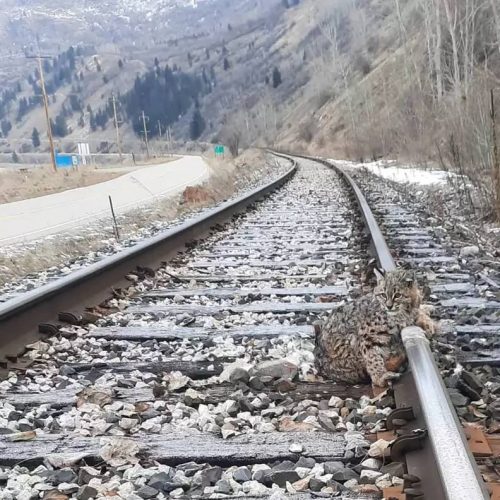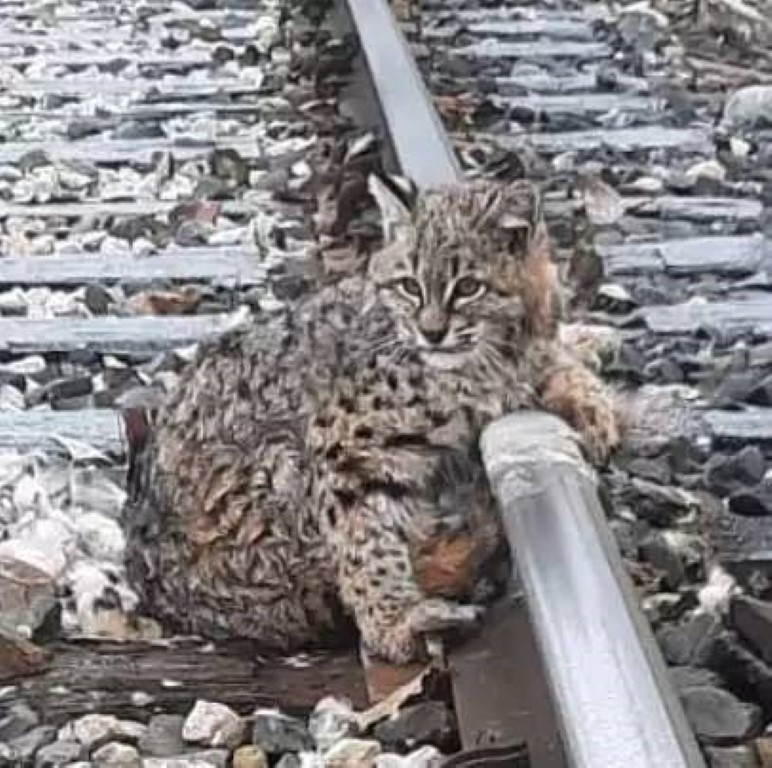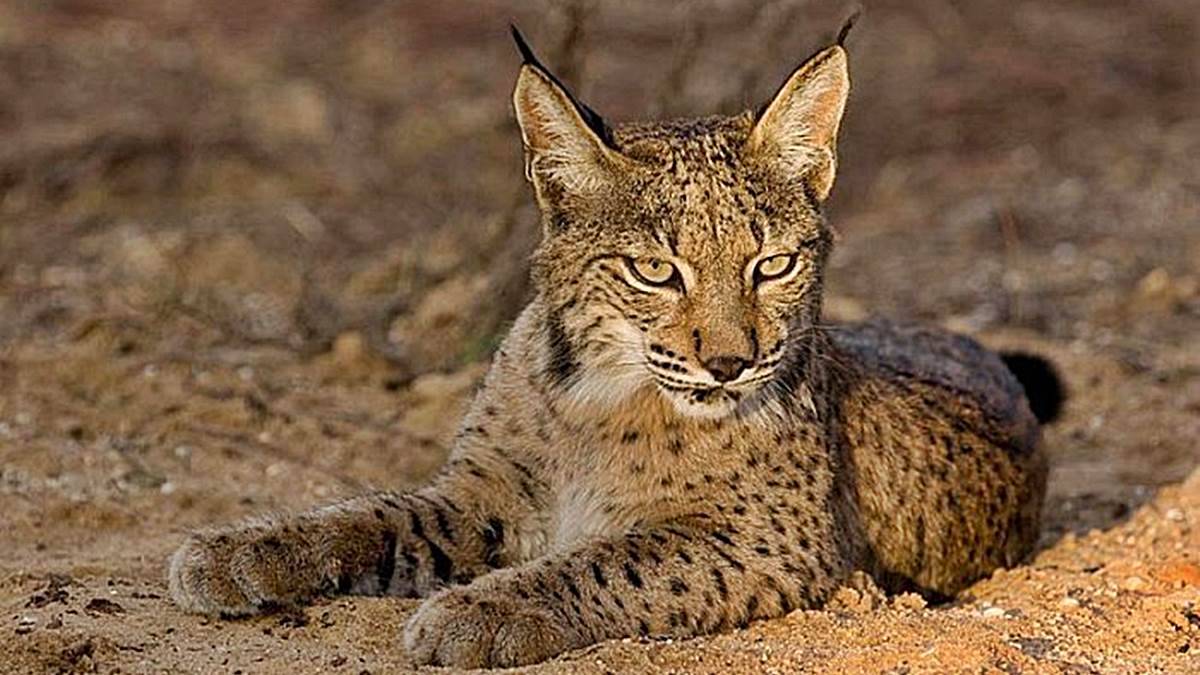Mysterious like few other animals, the lynx is a solitary animal. Rarely will they be discovered in herds; most of the time, they wander from one place to another unaccompanied. This majestic animal hardly goes unnoticed by wildlife lovers.
Although sometimes seeing them lying down may give the impression that they are resting, this is not always the case. They may also be in need of help and a helping hand to free themselves.
This is the story of a lynx that at first glance appeared to be resting comfortably on the train tracks, however, its life was in grave danger.
A lynx trapped on the train tracks manages to return to its habitat thanks to the teamwork of some men.

Coby Reid was inspecting a stretch of railroad track in the middle of the Rocky Mountains when he came across a small bobcat.
The bobcat was sitting in the middle of the railroad tracks, apparently without any concern that it could stop traffic and that its life was at risk. On this Reid commented:
“The bobcat was lying on its hind legs with one arm casually resting on the rail, as if reclining in an armchair.”

The little animal seemed relaxed but when Reid approached it, he realized it was in grave danger. He and his partner approached cautiously and noticed that Lynx had become trapped on the train tracks due to the cold temperatures, a part of his body had become stuck to the metal and he needed help to be freed.
Reid knew he had to act as soon as possible, there was a train approaching so freeing him as soon as possible had become a priority for the men. Reid tried to cover the bobcat with his jacket while he found a solution, but the little animal didn’t seem too happy to be wearing something completely foreign to him.
“We took a moment to think about the situation before deciding to call our office to ask someone to bring us a bucket of hot water to help free the unfortunate lynx. Shortly after, our boss arrived, water in hand and ready to help.”
Image of an Iberian lynx.

While the men had the best disposition to help, the lynx felt exposed and vulnerable, as the first bucket of water was thrown at it one of the little animal’s paws broke free but this agitated it and it tried to rush at them. Reid said:
“With a little coaxing and more warm water, the cat was free. But to our surprise, he didn’t want to leave without a fight.”

Fortunately, Reid and the other inspectors were able to free the lynx, but it didn’t return to its environment without a bit of a fight. After all, it’s a wild little animal that acted on instinct.
That day, the men went out to do one more routine job and returned home with the great satisfaction of saving a little animal considered endangered.
“The bobcat made sure we completed our inspection just 30 minutes before the next train passed. The same train that would have ended our little friend’s life had we not been conducting an inspection that morning,” concluded Reid.
The Eurasian lynx and Iberian lynx have been considered critically endangered by the IUCN since 2000 due to hunting by poachers for skins and hides, habitat loss has also contributed to an 80 percent population decline since 1960. We are happy to save that in the midst of this scenario, a lynx was released and will be able to continue to enjoy its life.
It is in our hands to ensure the lives of the little animals. Let’s respect their habitat and raise awareness about the importance of biodiversity on our planet.




